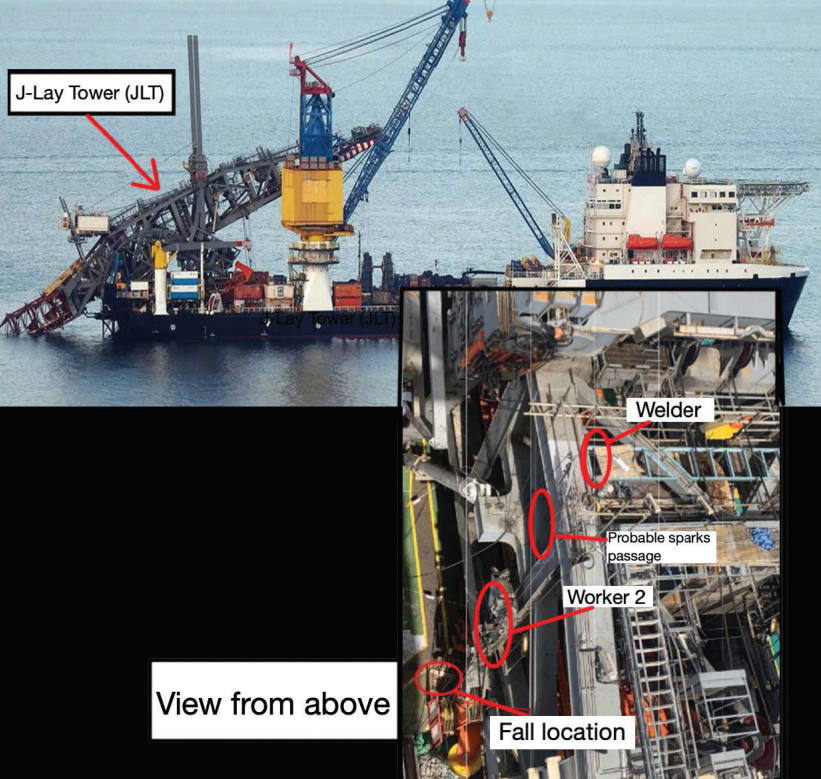202448 Work at height with added hazards
As edited from MAIC (Cyprus) report 49E/2022
A pipe-laying vessel was at anchor and maintenance was being done on the ‘J-Lay Tower’ (JLT) by a sub-contractor specialised in work at height. Two workers were tasked with chipping and painting the JLT. They relieved each other at height in alternation according to an agreed schedule.
At 0700, worker 1, secured with a safety harness and safety line, was chipping on a surface of the JLT at about 8m above the deck while worker 2 was attending on main deck. This work configuration continued in the morning and after lunch. By about 1530, worker 2 was ready to work at height on the JLT while worker 1 was to stay on deck. As worker 2 climbed up, worker 1 commented that another team of workers were welding a project higher up on the JLT, and that sparks were coming from the welders’ work area (2-3m horizontally from worker 2, and about 3-4m higher). Worker 2 acknowledged the comment but apparently said it was OK.
Worker 2 intended to clean and paint the metal surface of the JLT on the same day. He had tied a can of paint thinner to his second safety line, which was hanging at his side, and was using a needle gun to chip the surface of the JLT, with the thinner for cleaning.
About 45 minutes after worker 2 had commenced the chipping and cleaning at height, sparks from the overhead welding operation fell into the thinner can hanging at his side. The thinner ignited. In a panic, he tried to get rid of the burning can, but it was still secured to his safety line. The can swung back on to him as a pendulum and ignited thinner splashed onto his coveralls. The fire burned the safety harness and the rope securing it, causing him to fall to the deck, where the victim continued to burn. The flames were quickly extinguished by crew and the vessel’s attending doctor arrived within minutes, but after many resuscitation manoeuvres, the victim was declared deceased.
The investigation found, among other things, that the identification of simultaneous operations had not been done nor had a permit to conduct Hot Work been granted to the welding team.

Lessons learned
-
While the inadequate implementation of the vessel’s Safety Management System (SMS) could be seen as the principal underlying factor of this accident, this statement is at once too general and unspecific to be of any use. Yet, if a company’s SMS is followed, such accidents should never happen.
-
This accident brings to light the importance of identifying simultaneous operations in a shared space on a vessel.
-
A permit to conduct hot work should always be the first step in hot work tasks. The permit must not be a check box exercise but consist of an analysis of the work area and all existing conditions and hazards.
